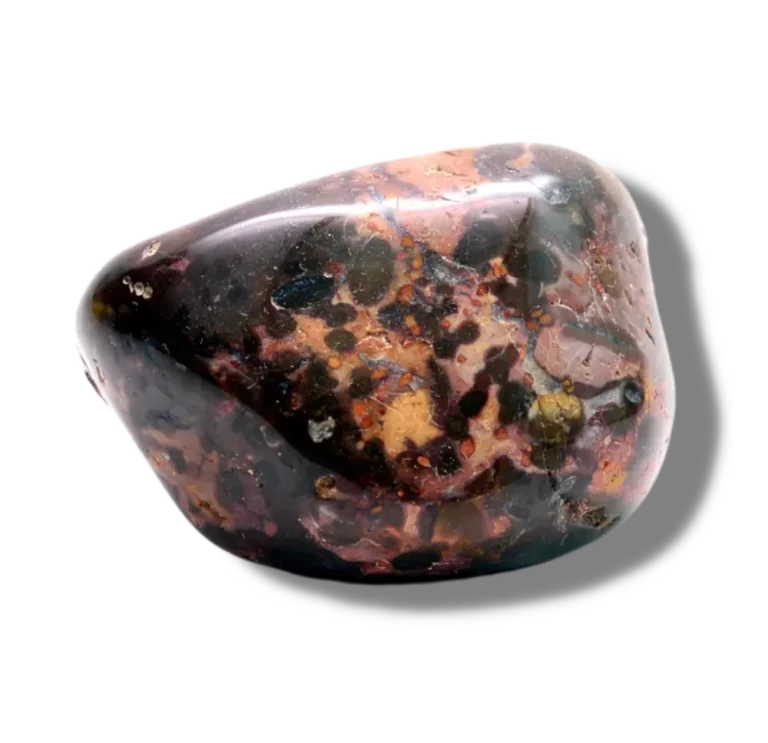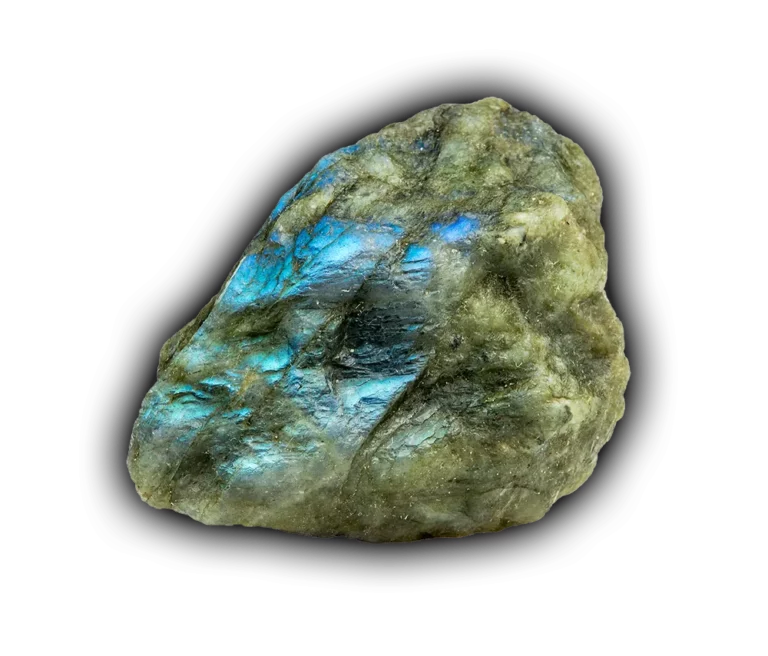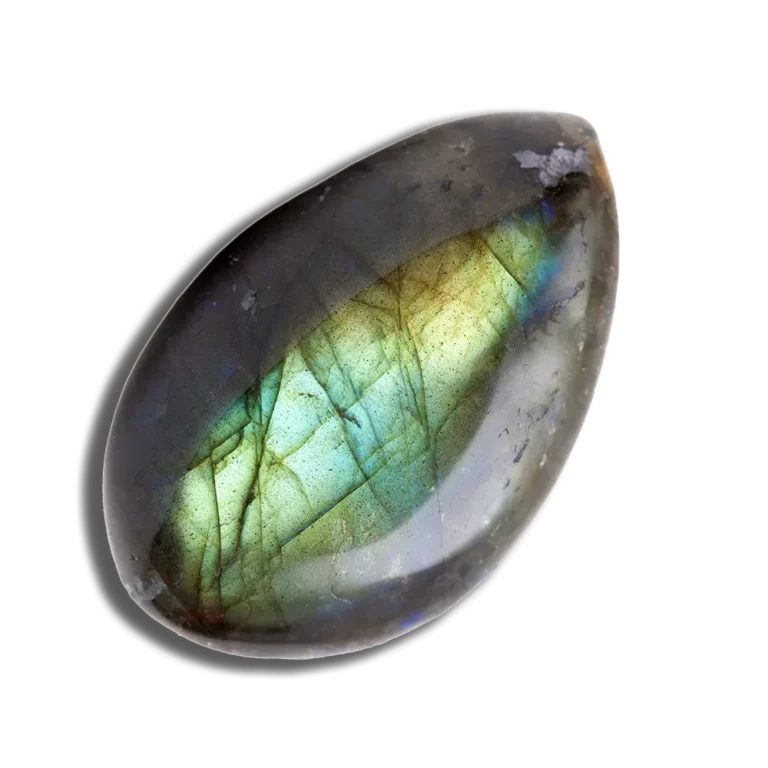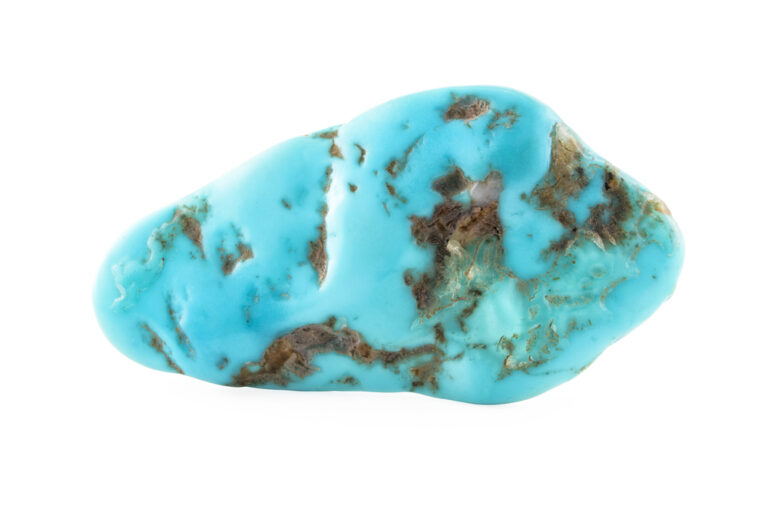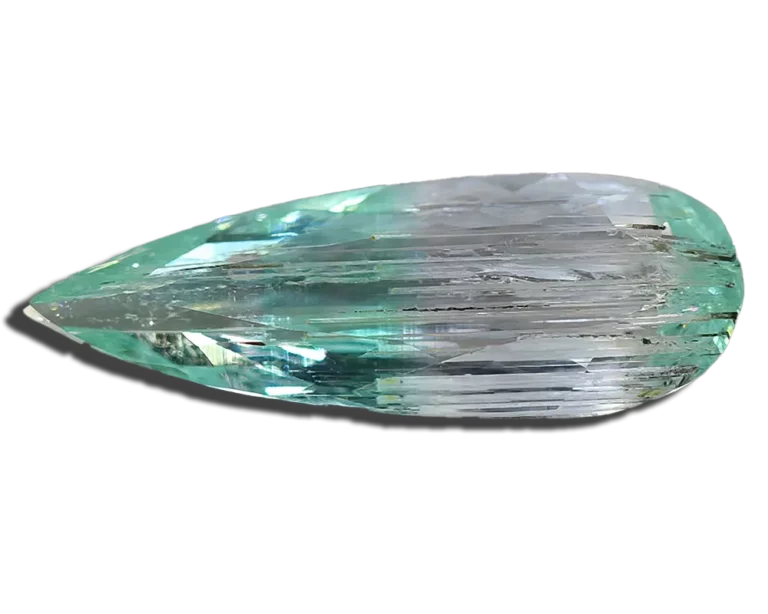Yellow Sapphire: Properties, Benefits & Meanings
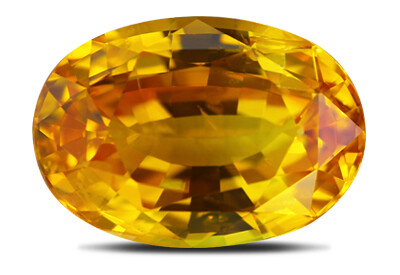
Yellow Sapphire Overview
Yellow sapphire is a variant of the sapphire gemstone that can be found in a range of yellow hues. It is a stunning gemstone that has been adored for centuries for its beauty and spiritual properties. It is commonly called “Pukhraj” and holds cultural, mythological, and astrological significance in South Asian cultures.
It is a rare gemstone that is highly valued in the jewelry industry. It is known for its gorgeous yellow color that ranges from pale yellow to vibrant canary yellow.
In this blog post, we will explore the properties, benefits, and meanings of Yellow Sapphire, giving you an in-depth understanding of this gemstone.
What Is Yellow Sapphire?
Yellow Sapphire is a variety of the mineral corundum, composed of aluminum oxide. It is a precious gemstone prized for its stunning yellow color, which ranges from pale lemon to rich canary yellow. The color comes from trace elements of iron, chromium, and titanium within the crystal.
It is found in several countries worldwide. It is a rare and highly valued gemstone, especially in the jewelry industry. It is used to create exquisite jewelry such as rings, earrings, necklaces, and bracelets. In addition to its beauty, Yellow Sapphire is known for its physical and spiritual properties, which have been appreciated for centuries.
How is Yellow Sapphire Formed?
Yellow Sapphire is formed under high-pressure and high-temperature conditions within the Earth’s crust. It is a type of corundum in metamorphic and igneous rocks, such as gneiss, schist, and basalt. The formation process begins with the crystallization of aluminum-rich magma under high heat and pressure.
As the crystals form, they can contain trace amounts of iron, chromium, and titanium, which give the stone its distinctive yellow color. The exact hue of the gemstone depends on the specific amount and combination of these trace elements.
Once the crystals are formed, they can be mined from the Earth’s crust and cut and polished to create the beautiful gemstones we see in jewelry today. The most significant deposits are in Sri Lanka, Madagascar, and Australia.
Physical Properties
| Mineral Group | Corundum |
| Formula | Al₂O₃ |
| Chemical Name: | Aluminium oxide |
| Color | Yellow |
| Hardness (Mohs scale) | 9 |
| Refractive Index | 1.76-1.77 |
| Fracture | Conchoidal |
| Luster | Vitreous |
| Specific Gravity | 3.99-4.10 |
| Transparency | Transparent to translucent |
Etymology
The term “sapphire” comes from the Latin word “sapphirus,” which means “blue.” However, yellow sapphire is not blue but rather a variety of corundum that is yellow.
The term “sapphire” is often used to refer to any corundum gemstone that is not red, so “yellow sapphire” refers to the yellow-colored variety of corundum.

Where is Yellow Sapphire Found?
Yellow sapphire is found in the following countries:
- Afghanistan
- Brazil
- Canada
- China
- Germany
- Russia
- Sri Lanka
- Madagascar
- Tanzania
- Australia
- Myanmar
- Nepal
- India
- Pakistan
- United States

Yellow Sapphire Appearance
Yellow sapphire is a variety of corundum, a mineral that crystallizes in the hexagonal system. It has a typical sapphire appearance with a smooth and rounded crystal form. It is usually found in various yellow hues, from pale lemon-yellow to vivid golden-yellow. The color is due to trace amounts of iron in the crystal structure.
Yellow sapphire is typically transparent to translucent and has a vitreous luster. It has a high refractive index, which means that light entering the gemstone is bent and reflected within the crystal, giving it brilliance and sparkle. In addition, the stone can have inclusions or tiny internal fractures, which are common in natural gemstones.
Types of Yellow Sapphire
Yellow sapphire is a variety of corundum, and several other colors of corundum are also classified as different gemstone varieties. Some of the other types of corundum include:
- Blue Sapphire
- Pink Sapphire
- Padparadscha Sapphire (a rare pink-orange variety)
- Green Sapphire
- White Sapphire
- Black Sapphire
Within the yellow sapphire variety, there can be variations in the shade of yellow, ranging from pale lemon-yellow to vivid golden-yellow. The intensity and saturation of the color can also vary, with more vivid and saturated stones generally being more valuable. There can also be variations in the clarity of the stone, with some stones having inclusions or other internal features that can affect their value.
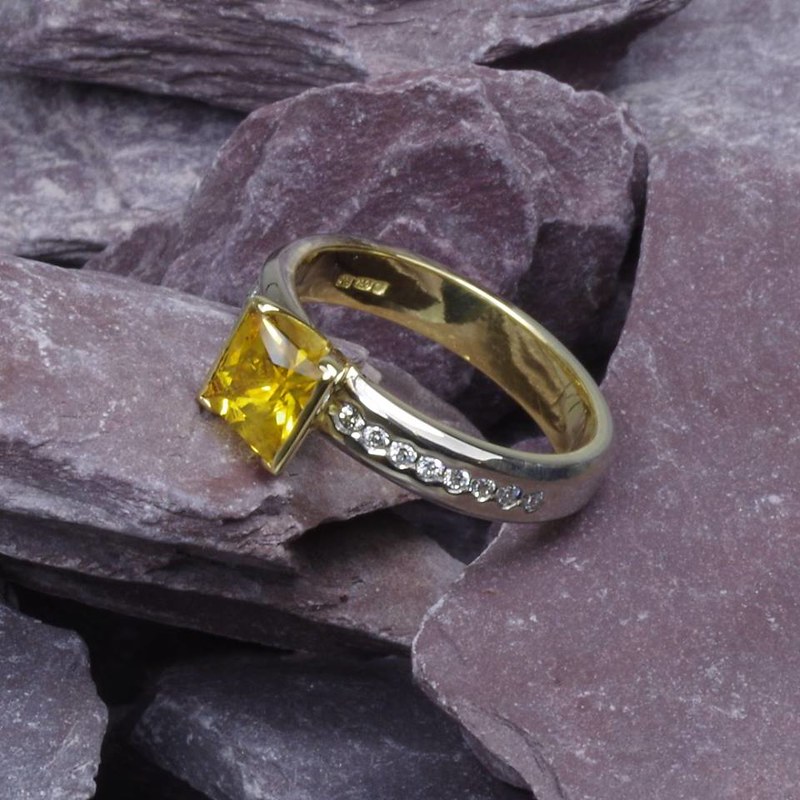
Yellow Sapphire Value and Price
The value of a yellow sapphire depends on several factors, including carat weight, cut, clarity, and color.
- Carat weight: The weight of the stone is a significant factor in determining its value. The price per carat generally increases with larger sizes, as larger stones are rarer and more in demand.
- Cut: The stone’s cut can affect its beauty, brilliance, and overall value. A well-cut stone will have good proportions, symmetry, and polish, allowing it to reflect light and maximize its color and sparkle.
- Clarity: The stone’s clarity refers to the absence or presence of inclusions or internal flaws. Stones with fewer inclusions and greater transparency are generally more valuable. However, some inclusions can be desirable if they create unique patterns or phenomena within the stone.
- Color: Color is the most crucial factor affecting its value. The most valuable stones are those with a pure, vibrant yellow hue and high saturation. Lighter or darker shades, or those with green or brown undertones, are generally less valuable.
Other factors that can affect the value include its country of origin, treatment status (natural vs. treated), and overall rarity and market demand.
How Can You Tell if Yellow Sapphire Is Real?
Several tests can help determine the authenticity:
- Visual Inspection: A real sample will have a vibrant yellow color consistent throughout the gemstone. It will also have a bright, reflective surface with no scratches, bubbles, or other inclusions that may indicate a synthetic or treated stone.
- Hardness Test: The stone has a hardness of 9 on the Mohs scale, which means it is quite resistant to scratches. A knife or other sharp object should not easily scratch a real piece.
- Specific Gravity Test: This test involves weighing the gemstone and comparing its weight to an equal volume of water. A real sample will have a specific gravity of around 4.0, which means it will be denser than most other gemstones.
- Refractive Index Test: This test measures how light bends as it passes through the gemstone. A real piece will have a refractive index of around 1.76, higher than most other gemstones.
- Heat Sensitivity Test: This test involves heating the gemstone with a jeweler’s torch for a short period. Heat should not affect a real piece, whereas a synthetic or treated stone may crack or change color.
It’s important to note that these tests are not foolproof and should be done by a professional gemologist. Therefore, if you are still determining the authenticity, it’s always best to seek the advice of a qualified gemologist.
What Does Yellow Sapphire Symbolize?
Yellow sapphire is believed to symbolize wisdom, prosperity, and good fortune. In many cultures, it is considered a sacred stone with healing properties. In addition, it can bring peace and serenity to the wearer.
It is believed to have several healing properties, including:
Emotional Healing: The stone is said to help with emotional healing by promoting positivity, self-confidence, and optimism. It is believed to reduce feelings of anxiety and encourage feelings of joy, happiness, and contentment.
Spiritual Healing: The gem is often associated with the third chakra, or solar plexus chakra, related to personal power, confidence, and self-esteem.
Intellectual Healing: The stone is associated with Jupiter and is believed to enhance academic abilities, boost creativity, and improve communication skills.
Promoting physical strength: The gem is believed to improve physical strength, stamina, and vitality.
Healing skin ailments: The stone is thought to benefit the skin and can help treat skin ailments such as eczema, acne, and psoriasis.
Reducing inflammation: It is believed to have anti-inflammatory properties to help alleviate pain and inflammation.
Promoting good vision: The stone affects the eyes positively and can help improve vision.

Uses of Yellow Sapphire
Yellow Sapphire is a precious gemstone that is widely used for different purposes. Some of the uses are:
Jewelry: It is a popular gemstone for making jewelry, especially for engagement rings, wedding bands, and other special occasion jewelry. It is often set in gold or platinum and can be found in various cuts and sizes.
Astrology: Yellow Sapphire is one of the nine gemstones believed to have astrological significance in Vedic astrology. It is said to represent the planet Jupiter and is believed to bring good luck, wealth, and success to those who wear it.
Healing: It is believed to have various healing properties, including boosting physical strength, promoting digestion, healing skin ailments, reducing inflammation, and improving vision. It is often used in alternative medicine practices like Ayurveda. It is believed to have a positive effect on the body and mind.
Feng Shui: In Feng Shui, it is believed to have the sun’s energy, which can bring warmth, light, and positive energy into a space. It is said to promote creativity, happiness, and success. It is often used in home decor and other Feng Shui practices.
Investment: It is a valuable gemstone that can be a good investment. Its value depends on factors like color, clarity, and size. It is often bought and sold by collectors and investors.
It is important to note that while Yellow Sapphire is believed to have these uses and properties, there is no scientific evidence to support these claims.
Is Yellow Sapphire a birthstone?
Yes, Yellow Sapphire is considered a birthstone for September, along with Blue Sapphire. It is a traditional birthstone in Western culture and the Hindu tradition, where it is associated with the planet Jupiter and is believed to bring good luck and prosperity to those born in September.
In addition to being a birthstone, Yellow Sapphire is also a popular gemstone for engagement rings, wedding bands, and other special occasion jewelry.
How To Take Care Of Yellow Sapphire Jewelry?
Yellow Sapphire is a durable gemstone, but it still requires proper care to maintain its beauty and luster over time. Here are some tips for taking care of Yellow Sapphire jewelry:
Store your jewelry carefully: When not in use, store it in a jewelry box or pouch to protect it from scratches, dust, and other damage. You can also wrap it in a soft cloth to keep it safe.
Clean your jewelry regularly: Wipe it gently with a soft cloth or brush using warm water and mild soap to keep it clean and shiny. Avoid harsh chemicals, ultrasonic or steam cleaners, as they can damage the gemstone or its setting.
Avoid exposure to heat and chemicals: Yellow Sapphire is sensitive to heat and can crack or fade if exposed to high temperatures or sudden temperature changes. It is also sensitive to chemicals like acids, detergents, and perfumes, which can damage the gemstone or its setting.
Remove jewelry when doing physical activities: When engaging in physical activities like sports, gardening, or cleaning, remove your jewelry to prevent damage or loss.
Have your jewelry checked and serviced by a professional: Over time, your jewelry’s setting can become loose or worn, putting the gemstone at risk of falling out or getting damaged. To ensure that your jewelry is in good condition, have it checked and serviced by a professional jeweler periodically.
Following these tips, you can keep your Yellow Sapphire jewelry looking beautiful and in good condition for years.
FAQ
What is the price range of Yellow Sapphire?
The price of Yellow Sapphire varies depending on factors like color, clarity, size, and cut. Generally, high-quality stones can range from a few hundred to several thousand dollars per carat.
What is the best way to wear Yellow Sapphire?
Yellow Sapphire is typically worn as a ring, pendant, or bracelet and is often set in gold or platinum. It is important to choose a setting that provides proper support and protection for the gemstone and to wear it on the right finger, which is the index finger of the right hand, according to Vedic astrology.
Can anyone wear Yellow Sapphire?
The gemstone is believed to be beneficial for people born in September and those whose birth charts indicate a strong influence on the planet Jupiter. However, it can be worn by anyone who appreciates its beauty and believes in its metaphysical properties.
Can Yellow Sapphire be used for engagement rings?
Yes, Yellow Sapphire is a popular gemstone for engagement rings due to its beauty, durability, and positive associations with wealth, success, and good fortune. It is often set in a classic solitaire or halo design.
Is Yellow Sapphire durable enough for everyday wear?
Yes, It is a durable gemstone that is suitable for everyday wear. However, it is still important to take care of it properly and have it periodically checked and serviced by a professional.



